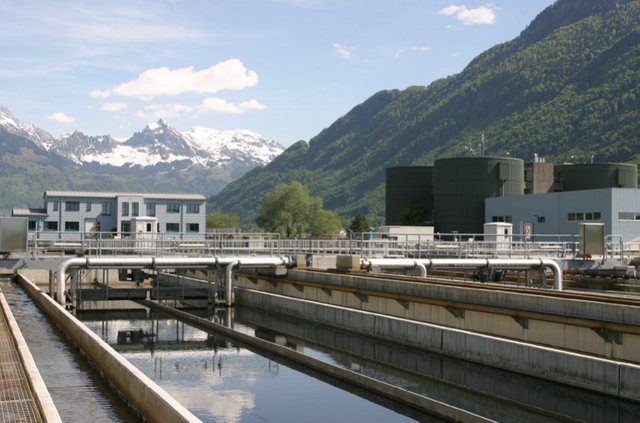This is a continuance of my groundwater series, part II. If you are looking for the first part click here. In this part I will discuss the significance of the groundwater drawdown and it’s affect on the local water table.
 Pixabay Image of Milwaukee, Wis.
Pixabay Image of Milwaukee, Wis.
In Southeast Wisconsin 500,000 people rely on groundwater that live outside the Lake Michigan watershed. As cities and urban areas have developed in Southeast Wisconsin, they did not take into the account of watershed drawdown.
The result has greatly impacted the level of the Cambro- Ordovician aquifer and local municipalities are now starting to consider new options to conserve water in the region (Wisconsin Department of Natural Resources).
As the aquifer levels decrease pumping becomes more expensive and water becomes harder to access creating a legitimate concern for the future of water use and development in the area.
A primary issue of utilizing ground water is the rate at which the aquifer is recharged. There are many instances where uses of shallow wells for fresh water are compensated by aquifer recharge through rain and snow, and also through replacing waste water back into the ground (Raynes and Bradbury 2011, 573).
The problem lies when groundwater removal over takes the amount of recharge.
In a study of groundwater drawdown in the Ozaukee and Milwaukee County area, scientists also noticed that in this particular area of the state of Wisconsin aquifers have difficulty being recharged due to the effects from the presence of glaciers in the Ice Age.
They state; “In areas where aquifers are overlain by low permeability glacial sediments, a substantial amount of infiltrated water may move horizontally in the soil horizons and not reach the underlying aquifers as recharge.” (Raynes, Bradbury 2011, 564).
Not only will this affect the rate of recharge but in can actually increase erosion and runoff in areas where waste water is not being absorbed into the aquifer.
During times when rain and snow is lacking to feed water into rivers and streams, the water level of these hydrological systems is reflective of the ground water level, this is called the base flow (Hayashi and Rosenberry 2002, 313).
The base level flow is crucial for these systems to be maintained during times of low precipitation. Not only does ground water provide for a base level but is also contributes nutrients and climate control to surface water.
Therefore, when the groundwater level is reduced there can be serious consequences for the entire area affecting surface water as well as flora and fauna.
In the next series I will discuss improvements that are being done as well as some personal insights from my background in hydrology and conservation biology. Thanks for reading!
Reference List (Entire Series)
Environmental Protection Agency. Indoor Water Use in the United States.
http://www.epa.gov/WaterSense/pubs/indoor.htmlHayashi, M. and Rosenberry, D. O. (2002), Effects of Ground Water Exchange on the Hydrology and Ecology of Surface Water. Ground Water, 40: 309–316.
Rayne, Todd W., and Kenneth R. Bradbury. 2011. "Evaluating impacts of subdivision density on shallow groundwater in southeastern Wisconsin, USA." Journal Of Environmental Planning & Management 54, no. 5: 559-575.
United States Geological Survey. Protecting Wisconsin’s Groundwater through Comprehensive Planning. http://wi.water.usgs.gov/gwcomp/integrate/develop.html
Wisconsin Department of Natural Resources. Status of Groundwater Quantity in Wisconsin.
http://dnr.wi.gov/topic/groundwater/documents/pubs/quantity.pdf


Very nice analysis - thanks for the write up
Posted using Partiko Android
Downvoting a post can decrease pending rewards and make it less visible. Common reasons:
Submit
Thanks for the comment, I appreciate it!
Downvoting a post can decrease pending rewards and make it less visible. Common reasons:
Submit
Beautiful architecture
Posted using Partiko Android
Downvoting a post can decrease pending rewards and make it less visible. Common reasons:
Submit
Thank you!
Posted using Partiko iOS
Downvoting a post can decrease pending rewards and make it less visible. Common reasons:
Submit
Great information sir badger! Did you get a degree in conservation biology? Because you had to have people asking all the time about what in the world that was!
Downvoting a post can decrease pending rewards and make it less visible. Common reasons:
Submit